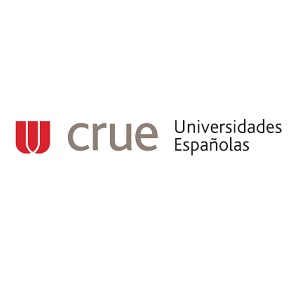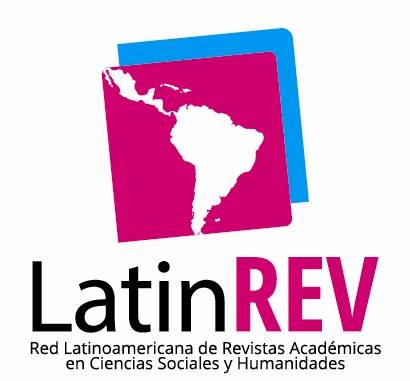La ‘realpolitik’ de la intervención humanitaria: cómo proteger los derechos humanos
The realpolitik of humanitarian intervention: how to protect human rights
La realpolitik de l'intervention humanitaire: comment protéger les droits de l'homme
La 'realpolitik' dell'intervento umanitario: come tutelare i diritti umani
A realpolitik da intervenção humanitária: como proteger os direitos humanos
La gravedad de la violación de los derechos humanos en la Guerra Civil Siria evidencia la necesidad de reforma de los mecanismos internacionales de intervención humanitaria en los países en conflicto. Haciendo uso de una amplia y variada bibliografía producida por expertos en el conflicto, así como informes elaborados por el Comité Independiente del Consejo de Derechos Humanos de las Naciones Unidas, se han establecido numerosas vulneraciones del Derecho Internacional Humanitario por parte de los actores involucrados en el conflicto bélico. Tras un análisis exhaustivo se proponen cinco medidas para mejorar el sistema de intervención humanitaria con el objetivo de prevenir la perpetración de crímenes de guerra, tortura y crímenes de lesa humanidad.
The seriousness of the violation of human rights in the Syrian Civil War shows the need for reforming the international mechanisms of humanitarian intervention in the countries in conflict. Making use of a wide and varied bibliography produced by experts in the conflict, as well as reports prepared by the Independent Committee of the United Nations Human Rights Council, numerous violations of the International Humanitarian Law by the actors involved in the armed conflict have been established. After an exhaustive analysis, five measures are proposed to improve the humanitarian intervention system with the aim of preventing the perpetration of war crimes, torture and crimes against humanity.
La gravité de la violation des droits de l'homme dans la guerre civile syrienne montre la nécessité de réformer les mécanismes internationaux d'intervention humanitaire dans les pays en conflit. En utilisant une bibliographie large et variée produite par des experts du conflit, ainsi que des rapports préparés par le Comité Indépendant du Conseil des Droits de l'Homme des Nations Unies, de nombreuses violations du Droit International Humanitaire par les acteurs impliqués dans le conflit armé ont été établies. Après une analyse exhaustive, cinq mesures sont proposées pour améliorer le système d'intervention humanitaire dans le but de prévenir la perpétration de crimes de guerre, de torture et de crimes contre l'humanité.
La gravità della violazione dei diritti umani nella guerra civile siriana dimostra la necessità di riformare i meccanismi internazionali di intervento umanitario nei paesi in conflitto. Avvalendosi di un'ampia e variegata bibliografia prodotta da esperti del conflitto, nonché di relazioni predisposte dal Comitato Indipendente del Consiglio per i diritti umani delle Nazioni Unite, sono state accertate numerose violazioni del diritto umanitario internazionale da parte degli attori coinvolti nel conflitto. conflitto. Dopo un'analisi approfondita, vengono proposte cinque misure per migliorare il sistema di intervento umanitario con l'obiettivo di prevenire la commissione di crimini di guerra, tortura e crimini contro l'umanità.
A gravidade da violação dos direitos humanos na Guerra Civil síria mostra a necessidade de reformar os mecanismos internacionais de intervenção humanitária nos países em conflito. Utilizando uma vasta e variada bibliografia produzida por especialistas no conflito, bem como relatórios elaborados pelo Comité Independente do Conselho dos Direitos Humanos das Nações Unidas, foram constatadas numerosas violações do Direito Humanitário Internacional pelos actores envolvidos no conflito armado. Após uma análise exaustiva, são propostas cinco medidas para melhorar o sistema de intervenção humanitária com o objectivo de prevenir a perpetração de crimes de guerra, tortura e crimes contra a humanidade.
Referencias
Díez, A., Cabrera, L., y Márquez, J.F. (2021). La migración de retorno en Colombia. Nuevas tendencias y configuraciones de los emigrantes colombianos retornados de Venezuela en la región Caribe. Puerto Colombia, Colombia: Sello Editorial de la Universidad del Atlántico. http://investigaciones.uniatlantico.edu.co/omp/index.php/catalog/catalog/book/165
Duro Ridruejo, P. (2017). La intervención armada en Siria y el principio de legalidad. Foro Nueva Época, 20(2), 213-228. http://dx.doi.org/10.5209/FORO.59015
Egea Jiménez, C., Díez Jiménez, A., y Márquez Guerra, J. F. (2022). El retorno en Colombia desde sus dimensiones de análisis. Una revisión sistemática de la literatura. Revista de Estudios Sociales, (81), 75-92. https://doi.org/10.7440/res81.2022.05
Ghotme, R.T; Ripoll, A. (2014). Las relaciones internacionales de la guerra civil siria: Estados Unidos y Rusia en la lucha por el poder internacional. Revista de Relaciones Internacionales, Estrategia y Seguridad, 9(2), 49-76. https://doi.org/10.18359/ries.41
Griffiths, M., O'Callaghan, T. y Roach, S.C. (2008). International Relations: The Key Concepts (2nd ed.). Routledge.
Humud, C.E. y Blanchard, Ch.M. (2020). Armed Conflict in Syria: Overview and U.S. Response (Informe n° RL33487). Congressional Research Service. https://fas.org/sgp/crs/mideast/RL33487.pdf
Independent International Commission of Inquiry on the Syrian Arab Republic (2020). Report of the Independent International Commission of Inquiry on the Syrian Arab Republic (Informe nº A/HRC/45/31). United Nations Human Rights Council. https://digitallibrary.un.org/record/3880804
Lobo Fernández, J.F. (2012). La intervención humanitaria ante las crisis en Libia y Siria: un estudio comparativo. Estudios Internacionales, (173).
López-Jacoiste, E. (2015). La guerra en Siria y las paradojas de la comunidad internacional. UNISCI Journal, (37), 73-97. https://www.ucm.es/unisci/revista-n-37
Menéndez del Valle, E. (2016). El derecho de veto en el Consejo de Seguridad de Naciones Unidas: ¿obstáculo para la Responsabilidad de Proteger? (Informe nº DT15/2016). Royal Institute Elcano. https://www.realinstitutoelcano.org/documento-de-trabajo/el-derecho-de-veto-en-el-consejo-de-seguridad-de-naciones-unidas-obstaculo-insalvable-para-la-responsabilidad-de-proteger/
Ogunnowo, O.E. y Chidozie, F. (2020). International Law and Humanitarian Intervention in the Syrian Civil War: the role of the United States. SAGE Open, 10(2), 1-11. https://doi.org/10.1177/2158244020919533
Requena del Río, P. (2018). Siria, la guerra que no cesa. En Ministerio de Defensa (ed.) Cuadernos de Estrategia 196: Oriente Medio tras el califato (1ª ed., 27-70). Instituto de Estudios Estratégicos. http://www.ieee.es/Galerias/fichero/cuadernos/CE_196.pdf
Rome Statute of the International Criminal Court. International Criminal Court. Rome, 17 July 1998, in force on 1 July 2002. https://www.icc-cpi.int/sites/default/files/RS-Eng.pdf
Sharp, J.M. y Blanchard, Ch.M. (2012). Armed conflict in Syria: U.S. and international response (Informe nº RL33487. Congressional Research Service. https://apps.dtic.mil/sti/pdfs/ADA584842.pdf
Sorenson, D.S. (2013). US Options in Syria. Parameters, 43(3), 5-15. https://press.armywarcollege.edu/parameters/vol43/iss3/2
Thakur, R. (2013). R2P after Libya and Syria: Engaging Emerging Powers. The Washington Quarterly, 36(2), 61-76. https://doi.org/10.1080/0163660X.2013.791082
Visitas al artículo
Métricas Dimensions
Métricas PlumX
Descargas
The realpolitik of humanitarian intervention: how to protect human rights
La ‘realpolitik’ de la intervención humanitaria: cómo proteger los derechos humanos
https://orcid.org/0000-0003-0004-1999
* Graduada en Estudios Internacionales por la Universidad Autónoma de Madrid y magíster en Derecho de Extranjería e Inmigración por la Escuela de Posgrado de Ciencias del Derecho y la Universidad de Cuyo. Madrid, España. maw.international.studies@gmail.com
Abstract
The seriousness of the violation of human rights in the Syrian Civil War shows the need for reforming the international mechanisms of humanitarian intervention in the countries in conflict. Making use of a wide and varied bibliography produced by experts in the conflict, as well as reports prepared by the Independent Committee of the United Nations Human Rights Council, numerous violations of the International Humanitarian Law by the actors involved in the armed conflict have been established. After an exhaustive analysis, five measures are proposed to improve the humanitarian intervention system with the aim of preventing the perpetration of war crimes, torture and crimes against humanity.
Keywords: humanitarian intervention, Syria, Syrian Civil War, Humanitarian International Law, human rights.
Resumen
La gravedad de la violación de los derechos humanos en la Guerra Civil Siria evidencia la necesidad de reforma de los mecanismos internacionales de intervención humanitaria en los países en conflicto. Haciendo uso de una amplia y variada bibliografía producida por expertos en el conflicto, así como informes elaborados por el Comité Independiente del Consejo de Derechos Humanos de las Naciones Unidas, se han establecido numerosas vulneraciones del Derecho Internacional Humanitario por parte de los actores involucrados en el conflicto bélico. Tras un análisis exhaustivo se proponen cinco medidas para mejorar el sistema de intervención humanitaria con el objetivo de prevenir la perpetración de crímenes de guerra, tortura y crímenes de lesa humanidad.
Palabras clave: intervención humanitaria, Siria, guerra civil Siria, derecho Internacional humanitario, derechos humanos.
La realpolitik de l'intervention humanitaire: comment protéger les droits de l'homme
Résumé
La gravité de la violation des droits de l'homme dans la guerre civile syrienne montre la nécessité de réformer les mécanismes internationaux d'intervention humanitaire dans les pays en conflit. En utilisant une bibliographie large et variée produite par des experts du conflit, ainsi que des rapports préparés par le Comité Indépendant du Conseil des Droits de l'Homme des Nations Unies, de nombreuses violations du Droit International Humanitaire par les acteurs impliqués dans le conflit armé ont été établies. Après une analyse exhaustive, cinq mesures sont proposées pour améliorer le système d'intervention humanitaire dans le but de prévenir la perpétration de crimes de guerre, de torture et de crimes contre l'humanité.
Mots-clés: intervention humanitaire, Syrie, guerre civile syrienne, droit international humanitaire, droits de l'homme.
A realpolitik da intervenção humanitária: como proteger os direitos humanos
Resumo
A gravidade da violação dos direitos humanos na Guerra Civil síria mostra a necessidade de reformar os mecanismos internacionais de intervenção humanitária nos países em conflito. Utilizando uma vasta e variada bibliografia produzida por especialistas no conflito, bem como relatórios elaborados pelo Comité Independente do Conselho dos Direitos Humanos das Nações Unidas, foram constatadas numerosas violações do Direito Humanitário Internacional pelos actores envolvidos no conflito armado. Após uma análise exaustiva, são propostas cinco medidas para melhorar o sistema de intervenção humanitária com o objectivo de prevenir a perpetração de crimes de guerra, tortura e crimes contra a humanidade.
Palavras-chave: intervenção humanitária, Síria, Guerra Civil síria, Direito Internacional Humanitário, direitos humanos.
1. Introduction
The Arab Spring reached Syria in January 2011, when peaceful protests broke out in various cities against the detention and torture of 15 young people of anti-establishment ideology. These protests, accentuated by the economic crisis, persistent corruption and exodus caused by the long-term drought, were harshly repressed by the al-Assad regime. This sequence of events generated successive waves of violence that ended in the outbreak of the Syrian Civil War that, for eleven years, has destroyed the lives of millions of people causing thousands of deaths and millions of internal and external displacements, as well as the destruction of infrastructure and cultural heritage. Therefore, the aim of this research is to analyse the development of the armed conflict, its actors and their impacts on the civilian population, as well as the international response to war crimes committed in Syria, in order to establish five measures which could improve de humanitarian intervention system.
2. The evolution of the armed conflict and the interests involved
This war is carried out by “three” internal actors and their allies. On the one hand, there is the al-Assad government, supported by the Syrian Armed Forces, the National Defence Forces and local militias. Regarding external support, Russian collaboration stands out, both political, in the United Nations summits, and military, since the Russian forces have carried out aerial bombardments against the Rebel Forces, as well as have intervened militarily at the request of the government of al-Assad. Its support has been fundamental during the war, allowing the balance to be tipped towards the government side. As to Russia's interests, those rely on the Mediterranean military base in Tartus, where there is also a naval base and an air base in Latakia, as Russia could seek to expand its geopolitical influence in the Middle East as well as serve as a counter-power to the United States. Furthermore, Syria is a large buyer of Russian weapons. At the diplomatic level, it intends to lead solutions to the crisis without, of course, harming its interests, which would allow it to take advantage of Syrian energy resources and its geopolitical importance in the future. Iranian support is also appreciated, through the supply of weapons, military advisers, combat troops and sources of funding.
Without it, the al-Assad regime would have already collapsed. Its interests are political -preventing major Saudi influence on the region-, as well as, economic and cultural. In addition, Hezbollah, a politico-military organization considered terrorist whose purpose is to expel Israeli invaders from Lebanon and eliminate Western influence from the region, acts in the Syrian war as government advisers and fights in combat. For its part, China provides diplomatic support by preventing any kind of intervention in Syria. As for its interests, it is one of the main importers of oil from Syria. Furthermore, like Russia, it seeks to avoid American influence. Finally, Muslim Shiite militias have been recruited by Iran in Iraq, Afghanistan and Pakistan, also consisting of Afghan refugees living in Iran to reduce the casualties of Iranian forces.
On the other hand, the opposition encompasses forces of various kinds: from Protestants to jihadists. In the beginning, the Free Syrian Army stood out, however, the forces have diversified, accentuating the fragmentation of the opposition, because the only thing they had in common was to expel al-Assad from power. It emerged as the first actor after the repression of the protests and began to count on deserters from the government Army. There is also the High Negotiating Committee which, with Saudi and Western support places itself as the main opponent of the al-Assad regime. It is the representative of the opposition in the UN negotiations. In addition, there are the Kurdish Popular Protection Units, which collaborate with the PKK. For its part, the Jabhat al-Nusra, an al-Qaeda affiliate in Syria that is suspected of harbouring international terrorists under its control, also stands out. Despite being categorized as a terrorist group by the US, this power collaborates with it in the region through, among others, the training of its members in Iraq. Finally, the participation of other nationalist jihadist groups has also been perceived.
As for its allies, there is the United States, which has provided weapons, training and military assistance and bombed areas occupied by ISIS. At first, the power stayed on the side-lines, but came into play fearing greater Iranian influence in the region. With the arrival of the Trump Administration, the US withdrew the formal request for al-Assad's resignation from power, however, shortly afterwards, it intervened militarily after an alleged chemical weapons attack by the Syrian government. Furthermore, with al-Assad's territorial recovery, the Obama Administration's goals of removing him from power while maintaining the unity of the territory have vanished. Regarding the role of the US in the war, the leadership of an international coalition against ISIS stands out, as well as the advice and training of local forces such as the Syrian Democratic Forces, it has also carried out campaigns in the north of the country against forces aligned with al-Qaeda.
Likewise, it maintains an indefinite presence in northern Syria with two fundamental purposes, the first, to prevent the reappearance of ISIS, and the second, to prevent a greater Iranian hegemony over the region, gaining strength in countries bordering its ally, Israel; protecting energy reserves; and weakening Russia, a key objective. Second, Turkey, whose interests lie in preventing a growth in the importance and influence of the PKK, as well as in being a regional power and a global player, has provided weapons and military and political support. It has fought against ISIS and the Kurdish people. Third, the Arab States of the Gulf, that is, Saudi Arabia and Qatar, which provide arms and financing, without stopping money flows that end up in terrorist hands, since they would not oppose a radical Islamic government. As for Saudi interests, Saudi Arabia wants to be the regional hegemon. On the other hand, Qatar is interested in building a gas pipeline across Syria, a project that Damascus had opposed due to its ties to Russia and Iran. Also appreciated are the Kurdish People's Protection Units, the militia faction of the Democratic Union Party that de facto rules in northern Syria, a region known as Rojava that it intends to make autonomous. Due to his effective fight against ISIS, it has won the support of the United States, although its support is balanced between the government and the rebel forces, since its ultimate goal is to survive.
Another actor to consider is Jordan, a state that has provided weapons, logistical support and military training, also standing out for having welcomed a large number of refugees. Israel, for its part, maintains a supposed neutrality but it is known that it has provided arms to the rebels, as well as that it provides medical attention to the wounded.1 Finally, France and the European Union have provided funding to the rebel groups and favoured the creation of the Syrian National Council, succeeded by the Syrian National Coalition as the legitimate representative of Syrian citizenship. They have adopted diplomatic measures such as embassy closures and economic sanctions as well as, together with the United States, led numerous resolutions against the al-Assad regime in the United Nations Security Council (UNSC).
Finally, the self-proclaimed Islamic State (ISIS), the enemy actor of all. It is a terrorist group that has faced all the actors involved in the war. It has a clear interest in creating an Islamic caliphate. Its capacity is dependent on the territories it occupies since its funds come from oil and taxes (Requena, 2018; Díez, Cabrera y Márquez, 2021).
Regarding the course of the war, the most outstanding milestones are pointed out. From 2011 to 2013, the opposition forces had gained ground, putting the government regime in danger; however, it managed to oppose the offensives thanks to external support. Around the same time, there were also international suspicions that the government had used chemical weapons, killing 1,400 civilians.2 However, no intervention took place despite the warnings and promises of Barack Obama, who had marked this type of attack as a red line. Thereafter, between 2013 and 2014, neither the regime nor the opposition achieved victories. Then the third actor, ISIS entered the scene and conquered large parts of the territory. Following the timeline, in 2015, Russia began to intervene, and its bombings helped the regime regain Aleppo in 2016. In 2017, the US, under the Trump Administration, launched offensives against the Syrian air base of Shayrat. Turkey joined the fight in 2018 to prevent the creation of an autonomous Kurdish territory, even though they have already de facto constituted Rojava territory. Russia prevented a further Turkish advance by blocking the airspace.
The Syrian and Russian regimes have used the strategy of siege and bombardment against the populations occupied by ISIS and other terrorist groups, until they surrender and allow the withdrawal of the civilians who have survived, which is why “indiscriminate bombings are taking place” against the civilian population. In the words of Luis Alberto Moniz, it is a proxy war that pits powers such as Iran, Syria and Russia against Qatar, Saudi Arabia and Turkey (Requena, 2018). Proxy war or not, one thing is clear: external support is being decisive in the development and duration of the conflict. As Sharp and Blanchard (2012) had predicted, the actors would remain “trapped in an armed conflict” and “incapable of negotiating”. Also, for a decade, neither side has managed to cease hostilities. Therefore, it is required to study, whether a humanitarian intervention is necessary in the Syrian case. Therefore, throughout the following paper, the creation, modification and implementation of certain mechanisms to the international humanitarian intervention system will be proposed, although, as indicated by Thakur (2013), it is important to bear in mind that it is very dangerous to associate humanitarian concepts such as morale and protection with war terms such as force or intervention.
To carry out a correct analysis, it is key to study, whether the human rights of Syrian citizens are being violated and, the truth is that, to this day, more than 50% of the population in Syria has directly suffered the consequences of the war, while 69% of the population lives in extreme poverty, according to Requena (2018), who also points out that throughout the armed conflict, investigations have been opened on war crimes and crimes against humanity, due to the evidence of bombings against civilians, hospitals, as well as the use of chemical weapons such as chlorine or sawdust gas. It has been recognized that government forces have exercised sexual violence against women, girls and men, within the framework of a campaign of humiliation and punishment. The Rebel Forces has also been accused of committing war crimes for torture and sexual violence. ISIS has also stoned women and young people to death, persecuted and killed people belonging to the LGBTIQ + community, as well as forced underage girls to marry. There has also been sectarian cleansing. All the forces have been accused of denying access to food, water and sanitary services (Requena, 2018).
3. Does the R2P mechanism work?
After this brief analysis, it is evident that serious human rights violations have been committed in Syria by the actors involved in the conflict. For this reason, a reform of the Responsibility to Protect (R2P) mechanism is essential, either through the reform of the UNSC, through a direct referral of the case to the International Criminal Court (ICC) or through the creation of a completely new mechanism, as mandatory steps guide once the Human Rights Council identifies serious human rights violations such as crimes against humanity, war crimes, genocides, etc. The actions taken by de UNSC display the urge of the reform — the first vaguely complete draft resolution was drawn up in October 2011, in which it condemned serious human rights violations and the use of force against civilians, demanding an end to the conflict. Even having omitted the referral to the ICC, the application of sanctions or the appeal to the United Nations High Commissioner for Human Rights, it still won the Sino-Russian refusal. In response, Russia proposed another resolution that, while condemning violence and human rights abuses, targeted the rebels and exempted the al-Assad regime.
The most the UNSC has been able to do was issue a “press statement” but it was not even a “statement by the President” of the Council. In 2012, Morocco presented another draft resolution on behalf of the Arab League that did not contemplate sanctions but imposed the adjustment by Syria to the Action Plan drawn up by the League. Russia and China again vetoed the proposal, arguing that no action was taken against the opposition. In July of that same year, another draft resolution was presented based on Chapter VII of the Charter, which projected the activation of Article 41 if Syria, within a period of ten days, did not comply with the commitments of Resolutions 2042 and 2043. Russia, China and South Africa vetoed the proposal, citing interference in Syria's internal affairs (López Jacoiste, 2015; Egea Jiménez, Díez Jiménez y Márquez Guerra, 2022).
A Final Communiqué has also been prepared, in which Russia and China participated, but also vetoed. The United Nations Oversight Mission of the Syrian Arab Republic was created without much effect. In September 2013, the UNSC was alerted of the use of sarin gas in Damascus, for which it activated the procedure contained in Chapter VII of the Charter and proceeded with the chemical disarmament plan. Likewise, Resolution 2139 was also adopted in which it recalled the demand for medical neutrality and the demand for care for the injured, despite the intentions, saying the Resolution is not binding and therefore has not had any impact on the Syrian civilians.
In 2014, attempts were also made to refer the investigation for war crimes and crimes against humanity to the ICC, without success. The United Nations Assembly has also been very active, passing numerous resolutions, notably 66/176 of 2011, condemning the human rights situation; 66/253 of 2012, demanding the cessation of violence; 67/183 of 2012, requesting access to the territory of the UN Investigation Commission; 67/262 of 2013 addressed to the Security Council to study accountability measures.
The turning point occurred in 2013, when the use of chemical weapons in the conflict was reported. This was the red line marked by the United States that, after the crime, began to transport troops to the Gulf. Faced with the Russian refusal that prevented an intervention by the UNSC, an agreement was reached at the Geneva Conference, in which al-Assad promised that “international inspectors would eliminate all the forbidden weapons” (López Jacoiste, 2015: 11). This Conference was supported by Resolution 2118 of 2013, which established the aforementioned disarmament plan (López Jacoiste, 2015).
Despite the great success of the Geneva I Peace Conference, Geneva II was a failure in which no conclusion was reached. The permanent powers of the Council allied to the al-Assad regime, however, have used the result of the Libyan intervention as justification to prevent an incursion into Syria, as well as to prevent the referral of the case to the ICC (López Jacoiste, 2015). According to Duro Ridruejo (2017), a possible solution would be to limit the veto power of the permanent members of the Security Council when there are international crimes, although this entails an important legal reform to which these countries would refuse.
On the other hand, five States —Costa Rica, Jordan, Liechtenstein, Singapore and Switzerland— have proposed an abstention from the veto by the permanent members when dealing with issues related to atrocious crimes within the UNSC or, if exercised, that its members had to prepare an explanatory document on the reasons for the employment of the veto. Another proposal during these years has been the development of a “code of conduct” to be followed by the UNSC when dealing with crimes against humanity. The French initiative proposed that a minimum of 50 member states request the Secretary General to assess the nature of a crime and if it were an atrocious crime, the code of conduct would be applied directly (Menéndez del Valle, 2016). Even though these are some decent measures, they were not very successful. Undoubtedly, little can be achieved while perpetuating the “subordination of the Council to the demands of geostrategy” (López Jacoiste, 2015).
4. Accountability or impunity?
As explained before, it seems fundamental to create a fixed and rigorous mechanism of accountability and sanctions for not respecting international law on the protection of human rights. At the present moment, to find out if the actions of a government violate human rights, the existence of an armed conflict is not enough.
The applicability of International Humanitarian Law depends on two factors, “the intensity of the conflict and the level of organization of the warring parties”. Syria meets both conditions. Customary humanitarian law establishes “minimum standards of protection for the civilian population and for persons who do not participate directly in hostilities” (López Jacoiste, 2015: 16), with special emphasis on treatment with humanity, for both belligerent parties, consequently, the attacks with barrel bombs, against schools and hospitals, as well as the violence and torture exercised on the civilian population contravene the established criteria.
Regarding International Human Rights Law, it must be respected regardless of the typology of a conflict, and it is applied in a complementary way to International Humanitarian Law, also under the same arguments. However, broadly speaking, in the case of International Human Rights Law, it does not apply to non-governmental actors, since “human rights instruments stipulate obligations only for States” (López Jacoiste, 2015: 19).
However, due to the talks within the United Nations institutions, the opposition would also be burdened with a minimum of binding obligations. Regarding International Criminal Law, the Syrian case complies with the definitions set out in Articles 7 and 8 of the Rome Statute 3, on crimes against humanity and war, respectively, and, therefore, could be tried by the ICC. This would only be possible if the Security Council referred the case to the Prosecutor, since Syria has not ratified the Statute, which seems unlikely (López Jacoiste, 2015). This brief observation of international law shows that there is no one accountability mechanism that works in all cases.
5. Is the suspension of relationships a possible solution?
The US’ response to the Syrian crisis is an exemplary case of the need to create functional, unalterable, strong and effective mechanisms for suspending diplomatic, economic and military relations, among others, with a State that violates human rights. The Obama Administration has implemented the policy of the balance of power, contrary to what some analysts argue, who opt for offshore balancing, a practice according to which the hegemonic power does not get involved on the ground but turns to its allies.
This could be true if the United States remained a hegemonic power in the region. However, this position is distributed between the US, Russia4 and Iran. One of the objectives of the United States5 is to prevent the regime from surviving to avoid destabilizing the region through a Shiite expansion towards the border and allied countries. But the direct attack has been avoided to minimize the chances of a confrontation with Iran that could retaliate against Israel. Therefore, among the actions taken by the United States to pressure the al-Assad regime, there are numerous sanctions that include “reduction of exports, freezing of assets, sanctions against senior officials” as well as “suspension of diplomatic relations with Damascus” (Ghotme and Ripoll, 2014), but also the training of the Turkish Democratic Forces, which were not effective.
6. Safe haven, a refuge in a land of conflict
For good measure, it is crucial to create mechanisms for the constitution of so-called safe havens, or areas in which society is protected against persecution or the consequences of war within the very State in which an armed conflict is taking place (Griffiths, O'Callaghan & Roach, 2008). This is especially important to protect the life of civil society in a country at war, so that they do not have to risk their lives fleeing; and to alleviate the burden of the border countries from receiving migrants. However, at no time should this mechanism compromise the right to asylum in any way.
7. Without democratic and sustainable structures there will be no peace
In addition to what has been already exposed, a structured and stable peacekeeping and peace-building mechanism is needed. The latter begins during the conflict to avoid a relapse into hostilities. It is an opportunity to focus reconstruction on a direction of sustainable development, through the establishment of new institutions according to the principle of the rule of law. Without meeting these requirements, peace will not prosper, and society will have to face the harsh effects of war (Griffiths, O'Callaghan & Roach, 2008). Now, why is it necessary to develop a cooperation mechanism between States in order to maintain peace in a specific affected country?
In addition to geopolitical reasons, such as avoiding the destabilization of a key region in the extraction of hydrocarbons in a possible future conflict, this is especially essential to alleviate the suffering of the population and the total destruction of a specific country if the conflict reoccurs. Having a mechanism accepted by, for example, UN member countries, intervention in the form of humanitarian assistance, as well as the aid provided for reconstruction become more feasible. This debate is indispensable in the current times determined by populism and hostile policies, since the Trump Administration has decided not to participate in the reconstruction, of the country (Requena, 2018).
8. An emergency ceasefire
The last measure should be based on recent times, which have shown us the importance of ceasefire mechanisms demanded by the international community in times of emergency, such as the current pandemic. Regarding Syria, due to the pandemic caused by SARS-CoV-2, a ceasefire was established on March 5, 2020, and hostilities ceased until May, when pro-Assad regime groups as well as terrorists resumed the attacks. The country's socio-economic crisis worsened, and the standard of living deteriorated even more, if this was still possible. Negotiations at the international level did not stop either. The Security Council met up six times to discuss the Syrian conflict, reaching an agreement to provide humanitarian aid, and both the al-Assad regime and the opposition have agreed to sit in on the negotiations as soon as the health situation allows.6
The UN Secretary General also asked the G20 members to lift the sanctions imposed on Syria in order to provide medical supplies and food necessary for the survival of the population. In addition, the release of prisoners and kidnapped people was requested. However, “arbitrary detention, enforced disappearance and torture remained pervasive” (Independent International Commission of Inquiry on the Syrian Arab Republic, 2020: 4). Government forces have carried out indiscriminate attacks with projectiles, mortar bombs and rockets, as well as numerous executions and the destruction of buildings in the territories they have come to occupy. Selective assassinations that target health workers, politicians or judges, among others, also continue to take place. In fact, the Independent International Commission in its report made in 2020, suspects that it may be a war crime, as there was no clear military objective during the attack. Regarding torture, the detainees were “beaten with sticks and cables, bound around tyres, hung from ceilings and walls and lashed” (Independent International Commission of Inquiry on the Syrian Arab Republic, 2020: 7). Some prisoners suffered blows to the genitals while others were sexually assaulted. This inhumane treatment was accompanied by the deprivation of food7, water and sanitation while the prisoners were detained in claustrophobic spaces. There have been numerous deaths from these conditions, however, the bodies have never been delivered to families. No prisoner had access to legal protection during their time in prison, however, once released, they must sign documents that many witnesses say they are not allowed to read.
As for the civilian population, security marks have been established, to point out the people that the various intelligence services consider to be of interest, which have drastically reduced the reduced property rights, preventing them from accessing, selling, renting or inheriting properties. Commission studies indicate that al-Assad's regime has committed crimes against humanity. There are also testimonies of numerous looting and appropriations of property, even going so far as to dispossess homes or demand the payment of taxes to Kurdish populations by the Syrian National Army, which belongs to the opposition. It appears to be a coordinated practice to appropriate or sell the properties of the victims. Those who reported the events were threatened, while others were kidnapped and forced to pay a ransom to the ENS. Regarding the arrests, torture, deprivation of food and interrogations about the ethnic origin and faith of each detainee are witnessed, sometimes urging conversion to Islam. Collaboration with the Turkish forces is also suspected, given that there have been cases of transfer to the territory of that country, where the detainees have been accused of serious crimes. If this wasn't enough, numerous violations have been documented. In order to humiliate, extract information and torture the detainees, “Syrian National Army Military Police officers forced male detainees to witness the rape of a minor” (Independent International Commission of Inquiry on the Syrian Arab Republic, 2020: 13) while they were being beaten. Weeks later, “another detainee was gang-raped” (Independent International Commission of Inquiry on the Syrian Arab Republic, 2020: 13).
Continuing with the violations of women's rights, it is known that Kurdish women are being kidnapped and forced into marriage. Among other torture methods, electric shocks or the strapping of weights to the genitals stand out, while the person hangs with his arms tied behind his back for approximately thirteen hours. The Commission concluded that, according to the data provided, war crimes and violations of International Humanitarian Law have been committed (Independent International Commission of Inquiry on the Syrian Arab Republic, 2020). This shows that there is no effective ceasefire mechanism in times of an emergency.
9. Conclusions
This research paper, through a review of the context and the actors of the Syrian Civil War, has tried to investigate and demonstrate the violation of human rights, endorsing the humanitarian intervention in the country. It has been discussed why the intervention has not yet occurred and five mechanisms have been proposed to improve its system in order to face future humanitarian crises that may take place. In the first place, a reform of the R2P system has been proposed8, since the current one requires the approval of the Security Council, whose action is neither quick nor efficient and does not allow the case to be referred to the ICC. As specified by Duro Ridruejo (2017) even when, an international intervention would be legally endorsed even with a veto within the Security Council, in accordance with the principle of R2P and the aforementioned precedents.
This was followed by the need for an inflexible accountability mechanism and subsequent sanctions. Among other experts, Rawls endorsed this theory. He regrets that International Law is incomplete, because it has not an effective sanction system (Duro Ridruejo, 2017). Perhaps a referral mechanism to the ICC, as discussed in the previous case, would ensure that perpetrators of crimes against humanity do not go unpunished. Still, the ICC would need more funding and support given that it can currently only admit a few hundred cases for lack of resources. Thirdly, the suspension of relations with countries that violate human rights, and the imposition of sanctions could be a great advance in the defence of human rights, given that in times of globalization there are very few self-sufficient countries. Although, on the contrary, the researcher Lobo Fernández argues that incentives are also a good way to put pressure on an opponent and, in fact, propose that Western countries give Russia incentives to put pressure on Syria, given its influence in the government (Lobo Fernández, 20129).
On the other hand, the constitution of safe haven, without implying the taking away from society of the vital right of asylum, in a situation in which over ten years more than 6 million people have been internally displaced due to the war, while neighbouring countries are overwhelmed by more than 5.6 million refugees (Humud & Blanchard, 2020), safe haven could be a good temporary option to protect the population, especially the most vulnerable. Certainly, provided that the international community ensures maximum security and decent living conditions. In addition to creating safe spaces, the countries involved in the conflict, with the help of the international community, should begin to prepare a plan to support the reconstruction of Syria for when the war is over. Finally, the pandemic that has shaken our lives in the last year has also demonstrated the vital need for protection mechanisms and a ceasefire in a time of emergency.
As for the role of the United States, the power should maintain soft power relations with the border powers which are contrary to US interests in the region. Likewise, it should promote diplomatic agreements with powers such as Qatar or Iraq for the prevention of supplying arms to the regime or to terrorist groups, threatening with the withdrawal of their troops that both need for their security, and even with Iran, in whose interest is also the prevention of the constitution of a radical regime. Likewise, the current Biden Administration must set fixed red lines with clear and credible retaliation as proposed by Sorenson (2013).
Other options that the US has in Syria include “training, advising, and assisting the opposition, to include supplying logistics, weapons, and intelligence [...]; conducting standoff attacks and assisting the opposition, by air weapons against high-value regime targets, including bomb-carrying aircraft and missiles [...], establishing a no-fly zone [...]; establishing buffer zones. This option would create areas along borders (most likely Turkey and Jordan) where anti-regime forces could train, heal, and resupply, and where wounded civilians could receive treatment [...]; and controlling of chemical weapons” (Sorenson, 2013: 8). However, before intervening in any way, the US should calculate the foreseeable results of its intervention that contemplate the fall of the Assad regime and the division of Syria into sectarian fiefdoms run by warlords, or the strengthening of the dictator in the can. In addition, once it intervenes, it will have to remain committed to the cause (Sorenson, 2013) and the power may not be willing to shell out more than $11.3 billion again (Humud & Blanchard, 2020). In any case, the US could play the leading role in the establishment of these measures, given that its intervention has been insufficient and ineffective and, as pointed out by Sharp and Blanchard (2012), it is expected that the conflict could end in even greater weakness of the regime and the constitution of “Alawite, Sunni, Christian and Kurdish enclaves, with mixed populations in urban areas divided by sectarian neighbourhoods” (Sharp and Blanchard, 2012: 5-6).
References
Amnistía Internacional (2000). Corte Penal Internacional: Lista de requisitos para la aplicación efectiva del Estatuto de Roma. https://www.amnesty.org/download/Documents/140000/ior400112000es.pdf
Díez, A., Cabrera, L., y Márquez, J.F. (2021). La migración de retorno en Colombia. Nuevas tendencias y configuraciones de los emigrantes colombianos retornados de Venezuela en la región Caribe. Puerto Colombia, Colombia: Sello Editorial de la Universidad del Atlántico. http://investigaciones.uniatlantico.edu.co/omp/index.php/catalog/catalog/book/165
Duro Ridruejo, P. (2017). La intervención armada en Siria y el principio de legalidad. Foro Nueva Época, 20(2), 213-228. http://dx.doi.org/10.5209/FORO.59015
Egea Jiménez, C., Díez Jiménez, A., y Márquez Guerra, J. F. (2022). El retorno en Colombia desde sus dimensiones de análisis. Una revisión sistemática de la literatura. Revista de Estudios Sociales, (81), 75-92. https://doi.org/10.7440/res81.2022.05
Ghotme, R.T; Ripoll, A. (2014). Las relaciones internacionales de la guerra civil siria: Estados Unidos y Rusia en la lucha por el poder internacional. Revista de Relaciones Internacionales, Estrategia y Seguridad, 9(2), 49-76. https://doi.org/10.18359/ries.41
Griffiths, M., O'Callaghan, T. y Roach, S.C. (2008). International Relations: The Key Concepts (2nd ed.). Routledge.
Humud, C.E. y Blanchard, Ch.M. (2020). Armed Conflict in Syria: Overview and U.S. Response (Informe n° RL33487). Congressional Research Service. https://fas.org/sgp/crs/mideast/RL33487.pdf
Independent International Commission of Inquiry on the Syrian Arab Republic (2020). Report of the Independent International Commission of Inquiry on the Syrian Arab Republic (Informe nº A/HRC/45/31). United Nations Human Rights Council. https://digitallibrary.un.org/record/3880804
Lobo Fernández, J.F. (2012). La intervención humanitaria ante las crisis en Libia y Siria: un estudio comparativo. Estudios Internacionales, (173).
López-Jacoiste, E. (2015). La guerra en Siria y las paradojas de la comunidad internacional. UNISCI Journal, (37), 73-97. https://www.ucm.es/unisci/revista-n-37
Menéndez del Valle, E. (2016). El derecho de veto en el Consejo de Seguridad de Naciones Unidas: ¿obstáculo para la Responsabilidad de Proteger? (Informe nº DT15/2016). Royal Institute Elcano. https://www.realinstitutoelcano.org/documento-de-trabajo/el-derecho-de-veto-en-el-consejo-de-seguridad-de-naciones-unidas-obstaculo-insalvable-para-la-responsabilidad-de-proteger/
Ogunnowo, O.E. y Chidozie, F. (2020). International Law and Humanitarian Intervention in the Syrian Civil War: the role of the United States. SAGE Open, 10(2), 1-11. https://doi.org/10.1177/2158244020919533
Requena del Río, P. (2018). Siria, la guerra que no cesa. En Ministerio de Defensa (ed.) Cuadernos de Estrategia 196: Oriente Medio tras el califato (1ª ed., 27-70). Instituto de Estudios Estratégicos. http://www.ieee.es/Galerias/fichero/cuadernos/CE_196.pdf
Rome Statute of the International Criminal Court. International Criminal Court. Rome, 17 July 1998, in force on 1 July 2002. https://www.icc-cpi.int/sites/default/files/RS-Eng.pdf
Sharp, J.M. y Blanchard, Ch.M. (2012). Armed conflict in Syria: U.S. and international response (Informe nº RL33487. Congressional Research Service. https://apps.dtic.mil/sti/pdfs/ADA584842.pdf
Sorenson, D.S. (2013). US Options in Syria. Parameters, 43(3), 5-15. https://press.armywarcollege.edu/parameters/vol43/iss3/2
Thakur, R. (2013). R2P after Libya and Syria: Engaging Emerging Powers. The Washington Quarterly, 36(2), 61-76. https://doi.org/10.1080/0163660X.2013.791082
1 Its interests are not very evident, although it is recognized that if the Syrian regime falls, there could be instability on its border (Requena, 2018).
2 Among the abuses by governmental forces are also the use of barrel bombs, indiscriminate murder of children, employment of minors as child soldiers (by both sides), attacks on civilians, attacks on hospitals and health personnel (López Jacoiste, 2015).
3 Under the Rome Statute (1998), states are also obliged to end impunity for perpetrators of crimes against humanity. In other words, it is specified that the international community must ensure that those who commit such crimes do not result unpunished (Amnesty International, 2000).
4 Russia is interested in controlling energy routes and Syria has an important geostrategic value since it can be “a route for transporting energy resources to the Mediterranean”. Therefore, by investing in technology, among others, the country aims to increase the presence of energy companies in the Syrian region in order to keep prices high (Ghotme and Ripoll, 2014).
5 Sorenson (2013) argues that US interests focus on regional stability by preventing the proliferation of weapons of mass destruction (which could fall into the hands of terrorist groups), promoting democratic values and continued economic growth, and the maintenance of Israeli security. Still, he maintains that the chances of the United States benefiting from the conflict are more than remote, anticipating either the continuation of the al-Assad regime, or the victory of jihadist groups, who will fight to mutual exhaustion.
6 Although the opposition demands the resignation of al-Assad as a precondition for sitting at the negotiating table (Thakur, 2013).
7 A piece of bread with four olives. The detainees assure that, because of the extreme condition, they had to eat olive pits in order to nourish themselves (Independent International Commission of Inquiry on the Syrian Arab Republic, 2020).
8 If the international community decided to intervene by omitting the Security Council, it could do so with legitimate authority in two different ways, according to Michael Weiss. In the first place, “invoke the United for Peace resolution of 1950, which allows intervention by omitting the UNSC if two thirds of the Assembly reach an agreement”. But there is also the possibility that Turkey invokes art. 51 which enshrines legitimate defence. After ten years of conflict, it is more than possible that intervention in the Syrian case is a last resort. However, regarding proportionality, most analysts argue that a military intervention by the international community would only cause more damage and destabilize the region even more (Lobo Fernández, 2012).
9 The Syrian government invited Russia to participate in the war, indicating influence in the regime, as well as giving the foreign actor greater legitimacy in the eyes of the international system (Ogunnowo, Chidozie, 2020).
Derechos de autor 2022 Collectivus, Revista de Ciencias Sociales

Esta obra está bajo licencia internacional Creative Commons Reconocimiento-NoComercial 4.0.
Los originales publicados en Collectivus, Revista de Ciencias Sociales, son propiedad de la Universidad del Atlántico, siendo necesario citar la procedencia en cualquier reproducción parcial o total.
Importante: Los artículos publicados en la Revista Collectivus son responsabilidad exclusividad de sus autores y no comprometen el pensamiento de los miembros de la estructura editorial de la revista.
Los derechos de autor pertenecen a Collectivus, Revista de Ciencias Sociales. Por ello, la reproducción total o parcial del material publicado está prohibida, salvo autorización previa y conforme a los estándares de licencia de uso y distribución “Creative Commons Reconocimiento-No Comercial 4.0 Internacional”.


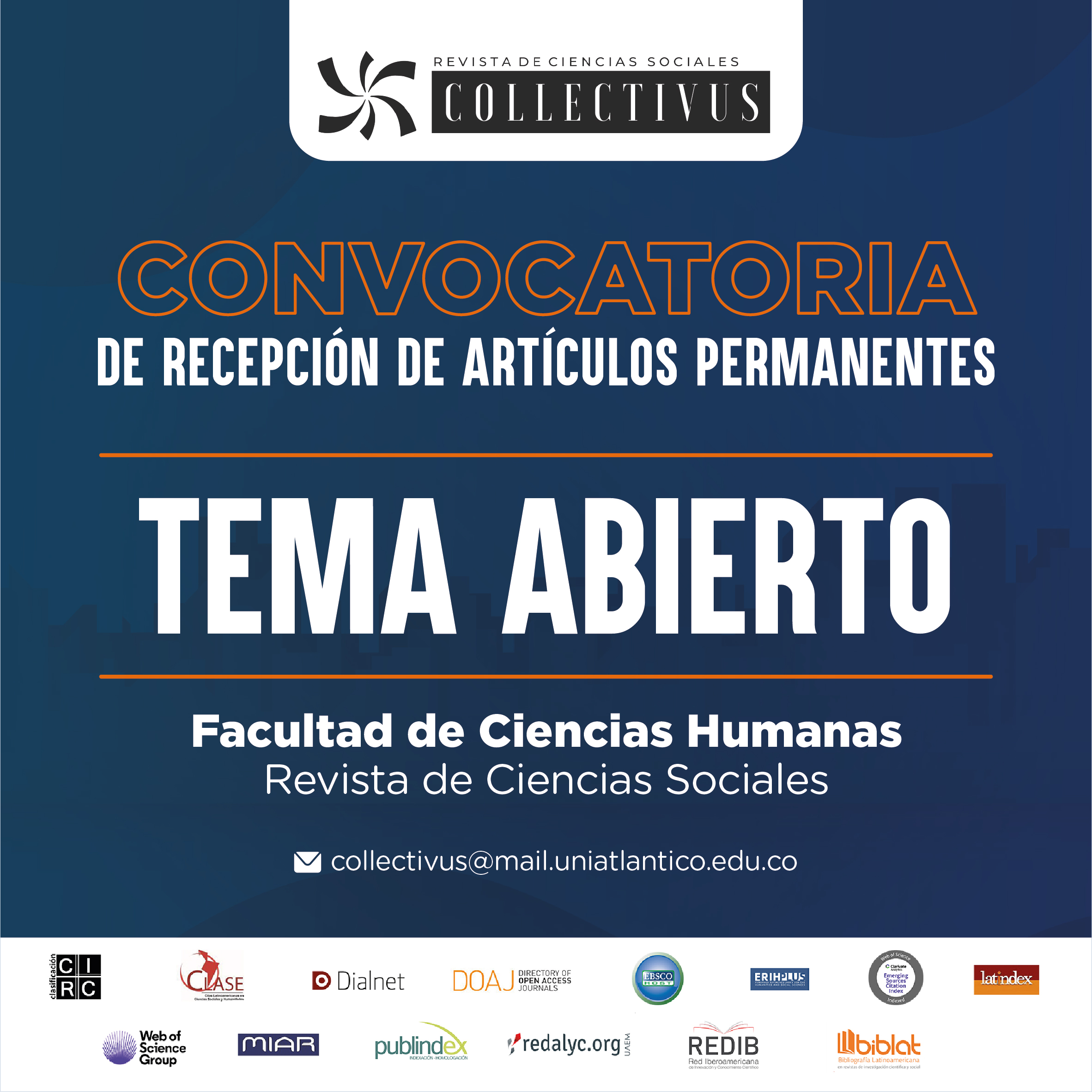




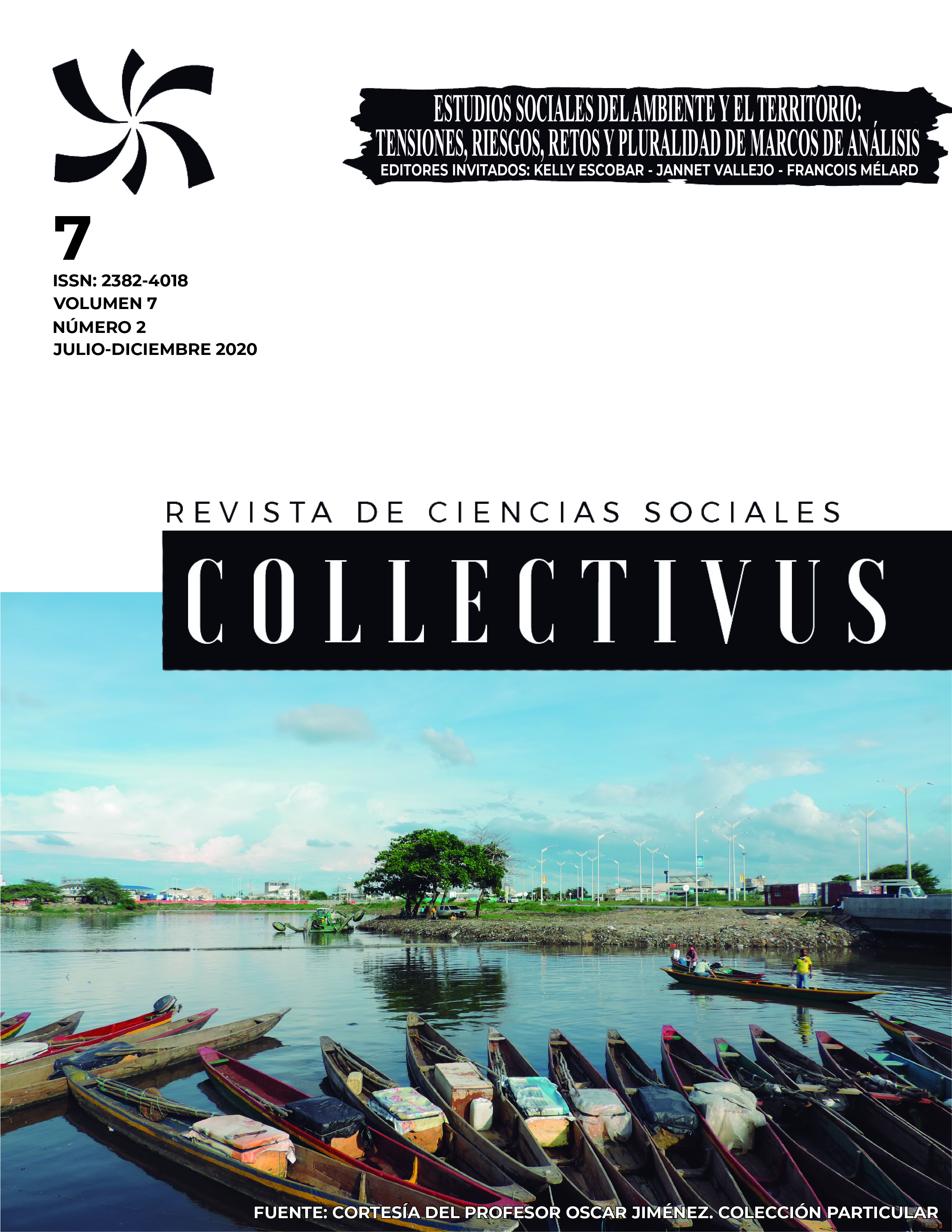


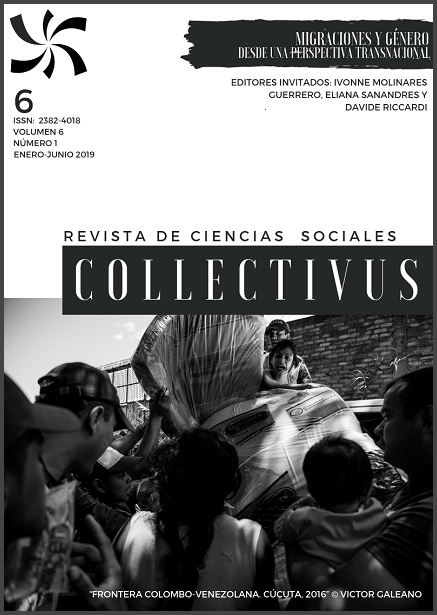










.jpg)
.PNG)




